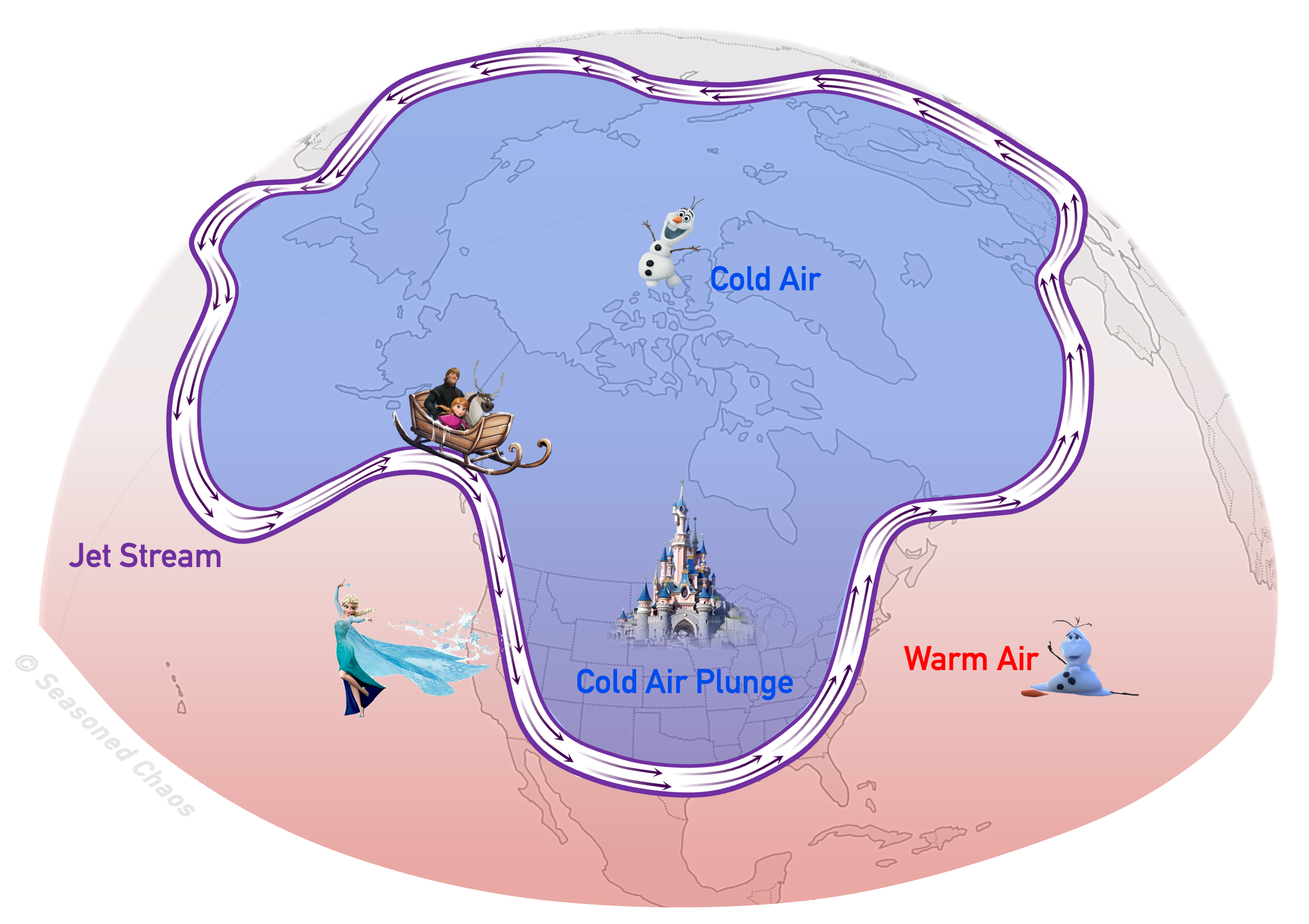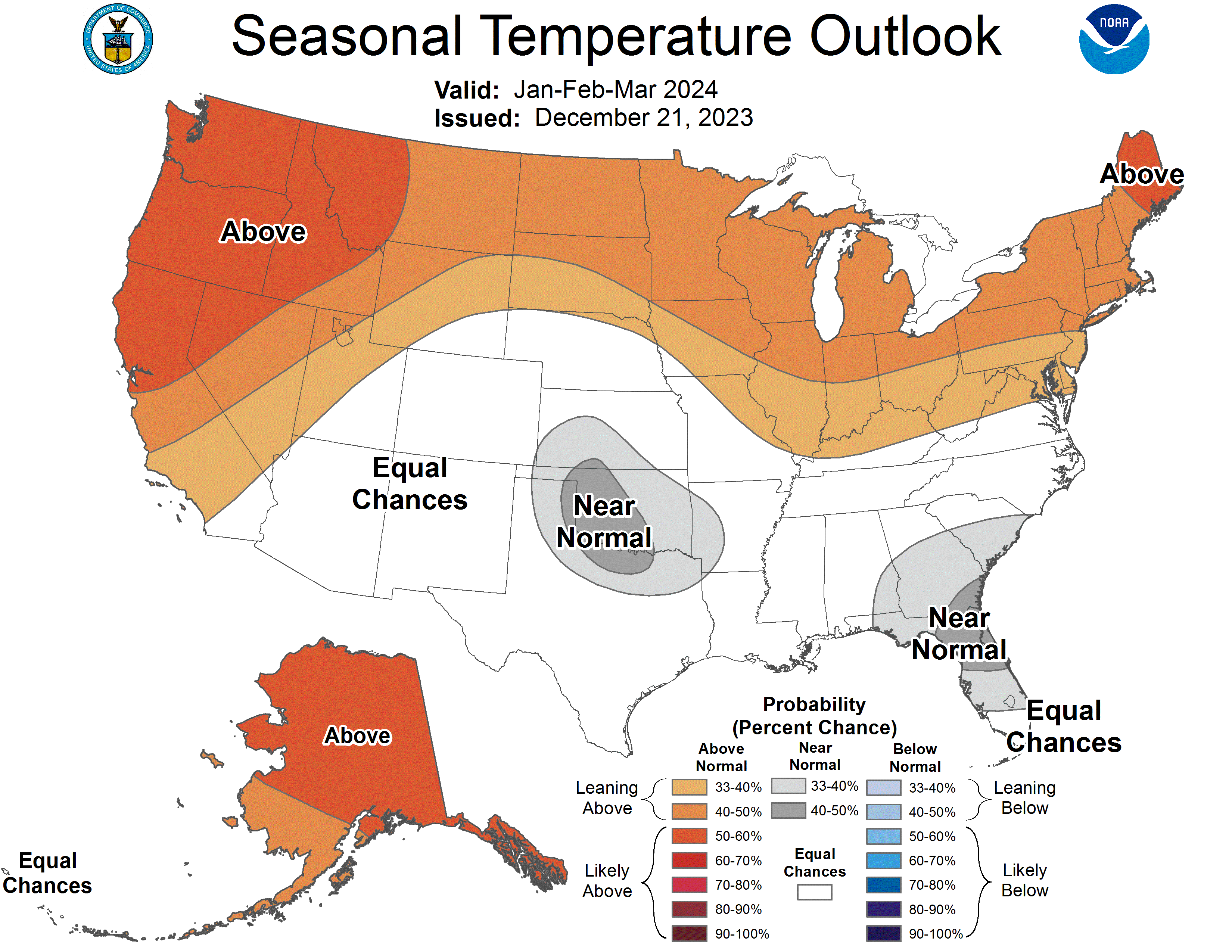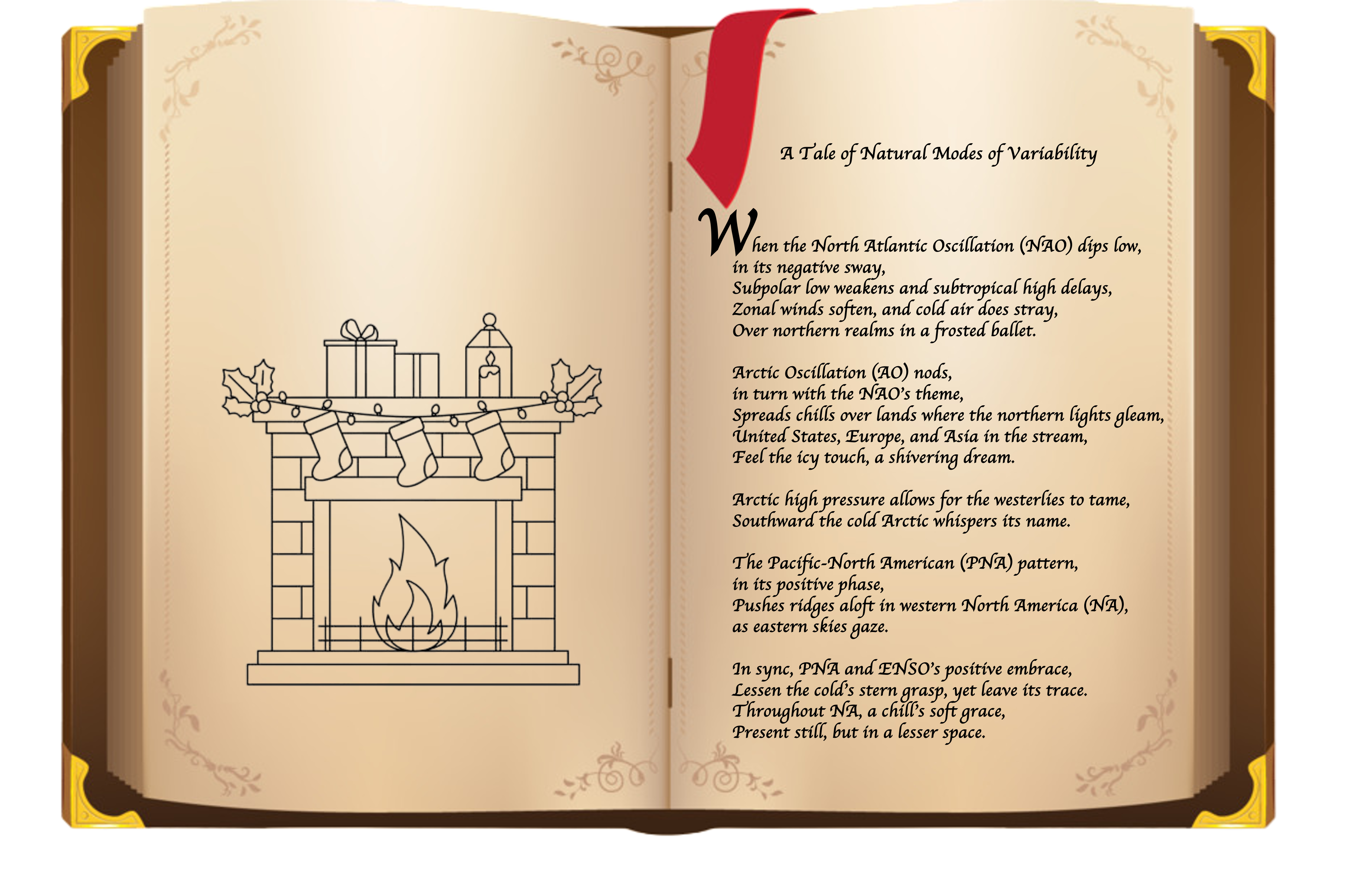The Enchanting Tale of Cold Air Outbreaks
Bio: Karen Papazian is a PhD student in the Department of Atmospheric Science at the University of Miami’s Rosenstiel School. She studies cold air outbreaks and their evolving patterns in the context of a changing climate.
Once upon a time, in a galaxy near and dear, there was a Kingdom named Middle Latitudia, an area of the mid-latitudes, where the weather shifted as unpredictably as Elsa’s wintry spells. This Kingdom experiences something quite fascinating, especially during the winter season. Cold air outbreaks, also known as cold spells, are a natural phenomenon that transforms bustling towns into serene, anomalously cold, frost-covered wonderlands, much like the magical transformation of Arendelle in Disney’s “Frozen.” While these frost-covered wonderlands are not always the result of cold spells, they do tend to arise where there are cold waves1.
The cold never bothered me anyway
In our tale, cold air outbreaks are akin to Elsa’s sudden bursts of icy powers. They occur when masses of very cold air from High Latitudia, the polar regions, move southward causing a significant drop in temperature.
While there is no specific universal index to quantify cold air outbreaks, the general ideology of them being spurs of extreme cold air is well accepted. In our Kingdom, a cold air outbreak is defined by a rapid decline in temperature over a short period, often accompanied by snow and ice. The National Weather Service (NWS) broadly classifies cold waves as a rapid fall in temperature within 24 hours, and extreme low temperatures for an extended period1. It’s as if the Kingdom’s regular weather is interrupted by Elsa’s icy spell, drastically changing the landscape.
The frequency of these cold air outbreaks varies not only in quantity, but where and when. In some years, they are rare and fleeting, much like the moments when Elsa carefully controls her powers, and the town is unable to build snowmen. In other years, they seem as frequent and unpredictable as Elsa’s emotions before she learned to control her abilities.
Looking into the unknown
To better serve the people of our Kingdom we aim to gain insight into the origins of these episodes of cold air. One way to predict if cold air outbreaks will impact the region is to monitor large-scale atmospheric patterns, such as via the jet stream. The jet stream is a high-altitude, fast-flowing air current that plays a significant role in weather patterns. When the jet stream dips south, it can bring cold polar air down into lower latitudes, leading to a cold wave. Additionally, phenomena, such as the stratospheric polar vortex, can push cold air southward into the mid-latitudes.

This graphic shows the dips in the jet stream that allow for cold air to plunge into Middle Latitudia, the mid-latitudes, setting up a pattern conducive for cold air outbreaks.
Typically prediction is hard on the subseasonal to seasonal timescale, but, luckily, cold air outbreaks are often influenced by drivers on subseasonal to seasonal timescales, which aid in its prediction. As we take a look at our weather pattern pie – no Olaf, not an actual pie! – we notice that cold air outbreaks relate to many slices of the pie. Within the weather pattern pie there are forecasts of opportunity that aid in the prediction and forecast, meaning there are precursors/drivers that may be related to increased prediction kill of cold air outbreaks, such as atmospheric blocking patterns, tropical sea surface temperature variability, and troposphere-stratosphere interactions.
Elsa, Anna, Olaf, Kristoff, and Sven have joined the group chat
Now let’s look and see if Anna, Kristoff, and Sven can go riding with their sleigh this winter season, and if we can build a snowman with Elsa… Olaf does seem to need some new friends. While we can’t speak for certain on the forecast of cold air outbreaks for the 2023-24 season – we can discuss climate patterns and how they help in the forecasts of these outbreaks 1-2 weeks prior. First, we look to see what the impacts of the current state of the El Niño Southern Oscillation (ENSO) will be on the overall winter temperature pattern. Due to the current warmer-than-normal waters in parts of the tropical Pacific Ocean (El Niño), we are expecting to see above-average surface temperatures in the northern areas of the continental US with equal-chance average surface temperatures in the south and southeast US. This does not seem like an opportune time for Kristoff and Sven as they are the official ice master and deliverers.

The official Climate Prediction Center three-month seasonal temperature outlook issued in December 2023 for January, February and March 2024.
As we look at the current winter season temperature outlook, it’s important to note that these outlooks are not forecasts but provide insight into the temperature pattern. For example, the seasonal temperature outlook for the 2020-21 winter season had much of Texas having an above average chance for much warmer temperatures – yet we know that there was an extreme cold air outbreak that occurred throughout Texas in February, 2021.
Anna wanted her time to shine, so she gave us a quick run-down on the teleconnection patterns and various modes of natural climate variability that can help us understand cold air outbreaks.
She really does have a way with words.

Do you want to build a snowman?
While we are not sure if we will be able to build snowmen this winter season, our Kingdom has many tools and models to help gain insight into the intrusion of cold air on a 1–2-week scale based on the many weather/climate patterns and oscillations previously discussed. I might have to tell Olaf it’s time to let the thought of more snowball fights…go.
Footnotes: